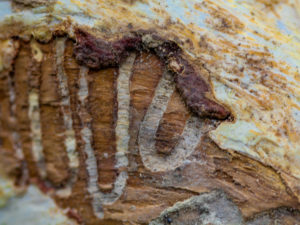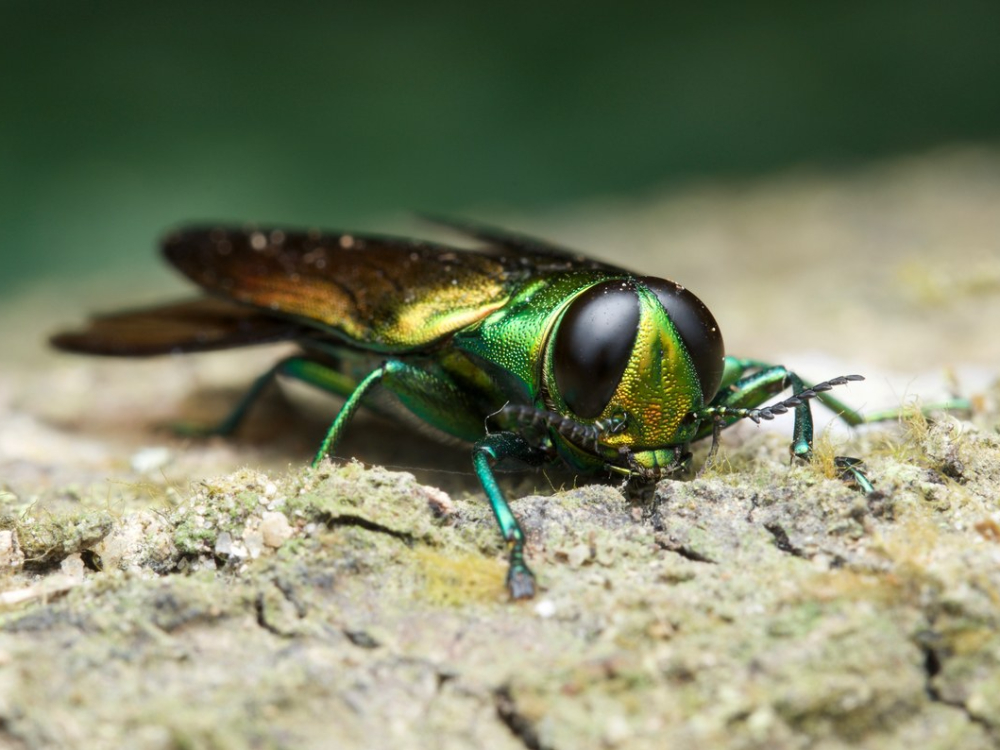 In North America, the borer has been found only on ash species. Eradication is no longer feasible for the emerald ash borer. Ash tree species likely will survive emerald ash borer beetles, but just barely. Those trees do not survive by accident. But treatment over a long period is not sustainable. If you are not willing or able to make that commitment, It is suggested to remove the tree now. As painful as it might seem, removal is the best way to slow EAB spread. Once infected, the ash tree will die within 2-4 years. The EAB has been spreading throughout the country.
In North America, the borer has been found only on ash species. Eradication is no longer feasible for the emerald ash borer. Ash tree species likely will survive emerald ash borer beetles, but just barely. Those trees do not survive by accident. But treatment over a long period is not sustainable. If you are not willing or able to make that commitment, It is suggested to remove the tree now. As painful as it might seem, removal is the best way to slow EAB spread. Once infected, the ash tree will die within 2-4 years. The EAB has been spreading throughout the country.
Where Did EAB Come From?
Originally from Asia, the emerald ash borer (EAB) was first discovered in the Detroit area in 2002. It is believed to have entered the country on wooden packing materials from China.

How Does EAB Damage a Aree?
EAB kills ash trees by burrowing into a tree and feeding on its nutrients. It all starts with epicormic shoots. When the tree is under stress, these shoots originate from the trunk. They can sometimes be found in the tree crown and on larger branches. Not all trees attacked by EAB develop epicormic shoots.The beetle causes damage to trees in their larval stage. EAB larvae feed by digging tunnels in the bark, which prevents the flow of water and nutrients to the tree. When the EAB larvae have made a tunnel around the entire circumference of the tree, completely preventing nutrition and water from reaching the leaves and branches, the tree dies.
How to Spot EAB Damage?
Signs of infestation include thinning and yellowing leaves, D-shaped holes in the bark, and canopy and bark loss. Scientists are working to find ways to stop the beetle. It’s been proven that efforts to save trees can be improved by identifying infested trees in their first year. The adult EAB is small, it can easily fit on a penny, and is a bright, jewel green color. Once the canopy has declined about 30% from its pre-infestation stage, your tree is likely beyond saving.
Can I Do Anything to Save My Ash Tree?
Yes… the following are 3 steps you can take to save your ash tree…
- Examine Tree For Signs of Infestation – It is very difficult for the layperson to determine if the EAB has infested an ash tree. The first visible symptoms are cracks in the bark where individual pests have been feeding. Tree canopies will begin to die back, starting in the top one-third of the canopy. Woodpeckers feed on the EAB and their activity and damage will increase. Eventually, you’ll be able to see serpentine larval feeding galleries on the wood grain and D-shaped exit holes where adults emerge.
- Use Injection Treatments On Infected Trees – If the tree is healthy enough, use injection treatments of an insecticide like emamectin benzoate Injections are considered the best treatment method because the chemical remains in the tree. Always read and follow the label directions for any insecticide. > Learn More
- Prevent the Further Spread of the EAB – Humans unknowingly transport the beetle, its larvae, or egg in firewood. If you purchase firewood while camping, burn it where you buy it. Don’t bring it home. If you see signs of an infestation, report it immediately to your State Plant Health Director.
Contact us (859-314-LAWN) for more information or a free instant quote!
—
 About Green & Grow
About Green & Grow
Green & Grow is a full service lawn care company specializing in lawn mowing, fertilization & weed control, aeration & seeding, insect control, and more!
> Learn More


 About Green & Grow
About Green & Grow